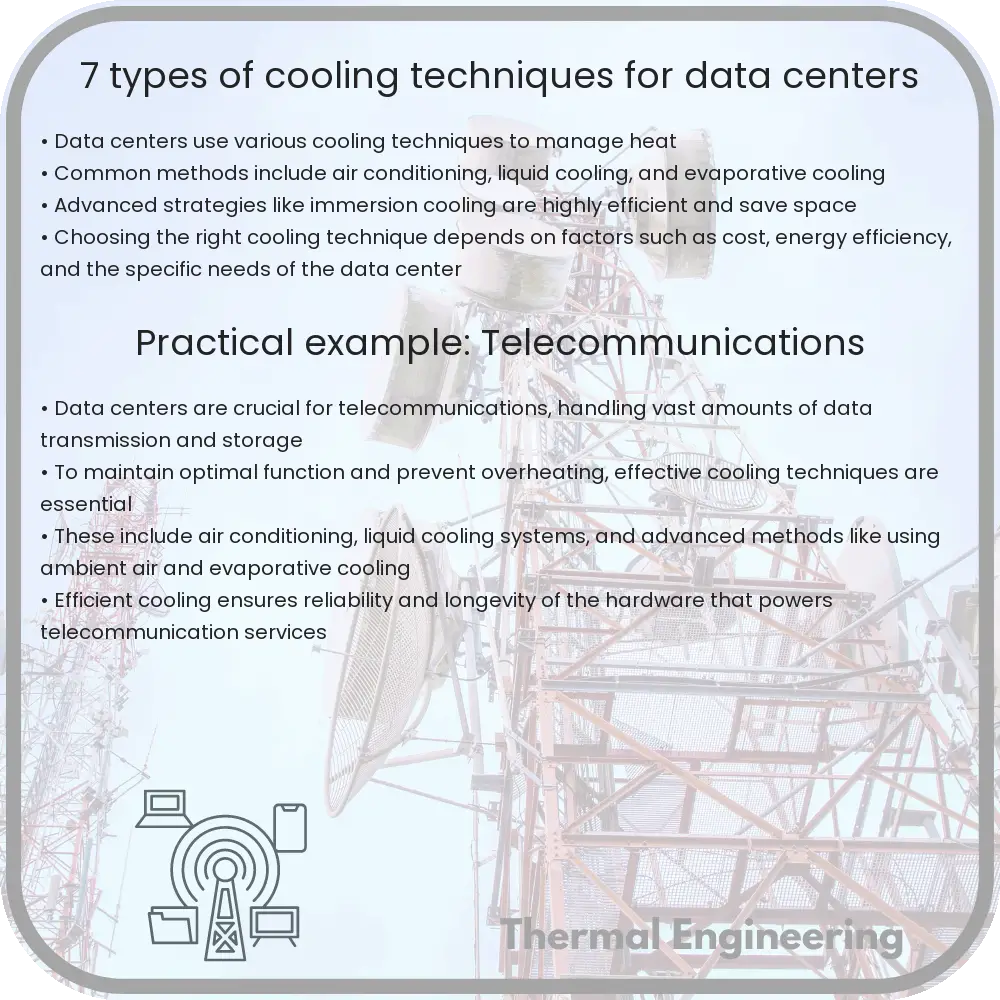An overview of effective cooling techniques like air conditioning, in-row cooling, and liquid cooling used in modern data centers.

Introduction to Cooling Techniques in Data Centers
Data centers are critical facilities that house computer systems, servers, and associated components. As these devices operate, they generate significant amounts of heat, which can reduce system performance and longevity if not adequately managed. Effective cooling solutions are paramount to ensure operational efficiency and maintain system reliability. This article explores seven common cooling techniques utilized in data centers.
1. Air Conditioning
Air conditioning units are one of the most traditional methods for cooling data centers. These systems use refrigerants and compressor technology to lower the temperature of the air. Cold air is then circulated throughout the facility to absorb the heat generated by the servers before being cycled back to the air conditioning unit for re-cooling.
2. In-Row Cooling
In-row cooling involves placing cooling units directly adjacent to server racks. This setup minimizes the distance that cold air travels before reaching the servers, which enhances cooling efficiency and effectiveness. The cooled air is directly targeted at the heat source, providing localized cooling for high-density configurations.
3. Liquid Cooling
Liquid cooling systems use a liquid coolant to absorb heat directly from the servers. This method typically utilizes water or a glycol mix, circulated through pipes and directly cooling components either via direct contact or through heat exchangers installed within the server racks. Liquid cooling is particularly effective at managing the high heat loads of modern data centers.
4. Free Cooling
Free cooling leverages external environmental conditions to assist in the cooling process. This technique can be employed in cooler climates where the outside air temperature is sufficiently lower than the desired data center temperature. By using economizers, outside air is brought in to cool the facility, significantly reducing the reliance on mechanical cooling.
5. Hot Aisle/Cold Aisle Configuration
This configuration involves the physical layout of server racks in alternating rows with hot aisle and cold aisle. The cold aisles face the AC output ducts, while the hot aisles face the AC return ducts. This arrangement helps keep the hot exhaust air from the servers separate from the cooled intake air, improving overall cooling efficiency.
6. Rear Door Heat Exchangers
Rear door heat exchangers (RDHx) are attached to the back of server racks, acting as a radiator that cools the air as it exits the server. The heat exchanger uses a coolant to absorb heat from the warm air ejected from the servers. This system allows for immediate cooling of exhaust without mixing it with the surrounding air, enhancing the cooling efficiency.
7. Immersive Cooling
In immersive cooling, server components are completely immersed in a non-conductive liquid. Heat from the servers is transferred directly to the liquid, thereby reducing the need for active cooling components like fans within the servers, which also leads to significant energy savings. This method is an emerging technology that is becoming more viable as heat loads continue to increase.
Conclusion
Choosing the right cooling strategy for a data center depends on several factors including geographic location, energy costs, environmental considerations, and the specific hardware used. As data centers continue to evolve, these cooling technologies are also being refined to provide more energy-efficient and cost-effective solutions to meet growing cooling demands.